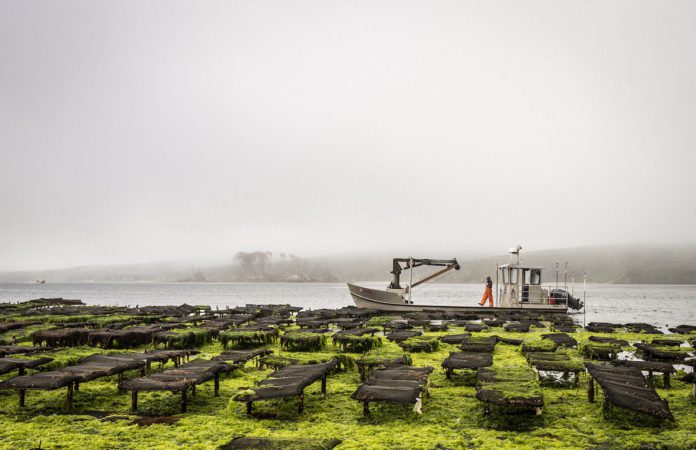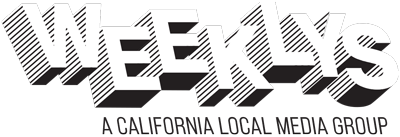What happens when Marin’s own Hog Island Oyster Co. collaborates with Google’s new Gemini AI? Apparently, the answer is a Super Bowl commercial that spotlights how AI technology can benefit small businesses across the nation.
For those who don’t know, Hog Island Oyster Co. is a beloved local oyster business that’s been at the forefront of Marin’s food scene since it was founded in the early 1980s.
What began as an idea for a funky seasonal roadside oyster bar evolved into a culinary cultural staple of the Bay Area. Now, Hog Island will represent California’s small businesses in a nationally televised Super Bowl commercial.
Hog Island Oyster Co. is one of only 50 businesses nationwide that was chosen to be featured in Google’s 50 States, 50 Stories Super Bowl commercial. The commercial will air during the big game and can be watched locally as a community at the San Francisco Market (or at home on the TV).
“We were pretty excited when Google approached us—I mean, who wouldn’t like to be in a Super Bowl commercial?” said John Finger, founding partner and CEO of Hog Island Oyster Co. “50 companies, 50 states, and we’re the one in California that they wanted to work with.”
“You start a company because you’re passionate about something, but you are not necessarily an expert in marketing or copywriting or building inventory tracking models,” said Harris Beber, head of marketing for Google Workspace. “That’s where AI should come in—to help you do more of what you love, less of what you don’t.”
So, how exactly has Hog Island Oyster Co. used Google Workspace and Gemini AI to do more of what they love and less of what they don’t? Well, as with all technology, it’s all about how one integrates new technologies into the workplace, ideally to alleviate strenuous, time-intensive tasks.
In other words, the integration of new technology can act as a useful tool that allows small business employees the luxury of more time and energy for work they love while delegating taxing tasks to the tech.
A great non-AI example of this kind of technological tool is Hog Island’s use of tipping bags in their oyster growing process.
“On the oyster growing front, the development of tipping bag culture has been a game changer in terms of tech,” explained Finger. “Using the tide to tumble the oysters around…creates a system where they hang down vertically in a low tide and the other direction in high tide. That’s a big game changer for us because some of the stuff we used to do manually we’re now having the tide do for us.”
By harnessing the power of the tides through tipping bag technology, Hog Island lifted a portion of the manual labor from its employees. And, by assigning the environment itself to do the job of tumbling the oysters, still achieved the desired result of tumbling: to slow down the oyster growth and get deeper cups and firmer meat.
“Once the oysters… are out in the bay, we’re relying a lot on nature,” Finger explained. “The food, water, oxygen flow—it’s all about the place, being keyed into a healthy estuary and about being mindful of our impacts.”
“We had looked at [using AI] a little bit, but it wasn’t until Google approached us with Gemini that we really considered its benefits,” added Finger.
So, what exactly are the benefits of Gemini in Hog Island’s local small business, and where exactly do oysters and AI intersect? Well, it all comes down to the data. While human minds are extraordinary biological supercomputers capable of great feats, accessing and analyzing decades of data in order to detect and predict trends is still a time-consuming endeavor—unless, of course, one has a computer smart enough to do it instead.
“Over the years, we’ve had databases to track things like growing and inventory and weather patterns, and those data sets are our company’s biggest assets,” Finger explained. “We’ve had all this data for years, but our big question was, how do we analyze all that?”
“That takes a lot of time if a person is doing it,” Finger continued. “Realizing that we can ask Gemini AI, ‘Hey, if we plant this number of oysters here, when can we project that 75% of them are going to reach extra-small size?’ and being able to get those answers without a huge amount of time, we’re pretty excited about that.”
Through the integration of Gemini into the Hog Island business model, West Marin’s local oyster growers can now have the consistent upper hand in predicting restaurant needs through the year, manage inventory flow and streamline the supply chain to guarantee customer satisfaction with little waste. In turn, this leaves the experts more time to devote to the work they are truly passionate about, like interacting with the community and making/eating great oysters, of course.
“My favorite oyster dish…I really do like them raw; just the essence of ocean with a little bit of lemon on it is something else,” Finger said. “If you cook them at all, I’d say grilled oysters is the way to go, especially the harissa grilled oysters we do at Hog Island.”
“In the wintertime, our trademark Hog Island Sweetwater is complex umami-rich and has a little bit of a smoky rich finish to it,” Finger continued. “In the summertime, I really like our Hog Island Atlantic—it has a snappy brine to it and a minerality.”
According to Finger, the three biggest factors that determine an oyster’s unique flavor and qualities are the type of oyster, the place it is grown and the hand that grew it.
“We coach our team members on [oyster varietals] all the time—it’s a lot like wine,” Finger explained. “This is our 42nd year in business, and having our origin in the ’80s put us right at the time of the whole California food movement.”
“The folks at Hog Island are experts at what they do—growing great oysters, and creating incredible experiences for the community,” said Beber. “We love to see how they’re using AI to help track and manage their inventory today, and we’re so excited for how they continue using this technology in the future.”
Whatever exciting new technology is on the horizon for Hog Island, Finger asserts that the business model is and always will be based on two core principles: “Do we have enough oysters, and do we have the right people?”
“[Hog Island] is a people-intensive business,” said Finger. “So, no, we won’t be replacing our servers with robots. But can AI help us process information faster and more efficiently? Yes.”
“We have been part of the West Marin community forever, and we feel our ethos, beyond taking care of the environment, is taking care of the community we’re part of,” concluded Finger. “Over the years, people have been saying we’re in the fabric of the area, Marin County. It makes us really proud to think back on what we’ve created and that anybody cares about that—it’s a cool thing.”











